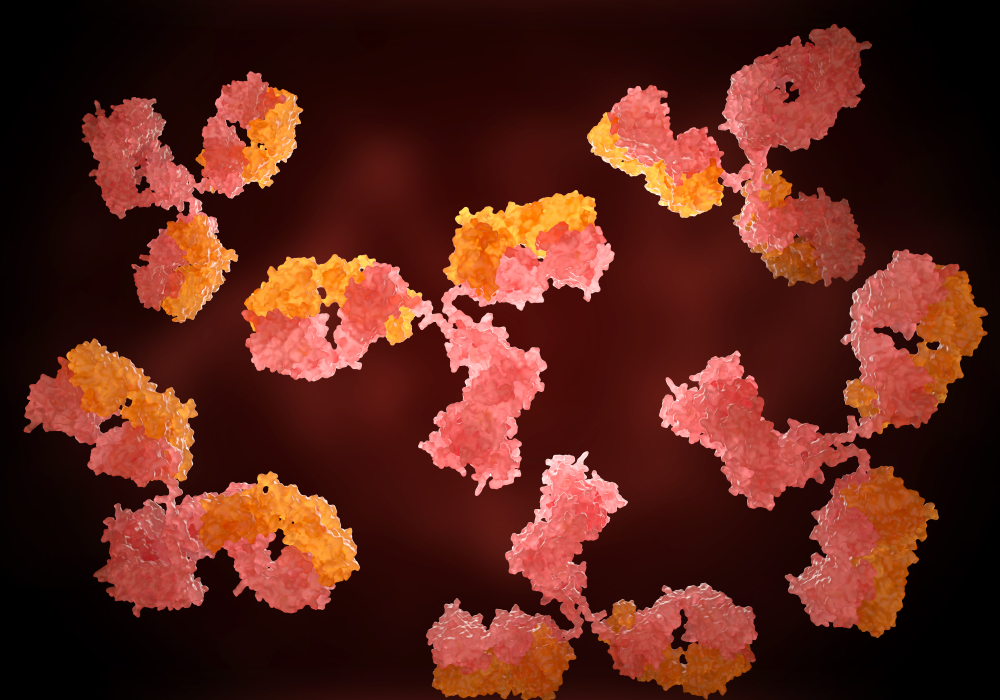MOUSE ANTI-HUMAN IMMUNODEFICIENCY VIRUS (HIV-1) GP120 (1996)
Mouse anti HIV-1 GP120 (clone 1996) antibody has been developed for use in ELISA and Western blot.
PRODUCT DETAILS – MOUSE ANTI-HUMAN IMMUNODEFICIENCY VIRUS (HIV-1) GP120 (1996)
- Mouse anti Human Immunodeficiency Virus GP120 (clone 1996).
- Specific for HIV-1 gp120. Functions in ELISA and western blot vs. strain IIIb.
- Purified from ascites fluid or culture medium by protein A chromatography or sequential differential precipitations with
- Presented in 0.01 M phosphate buffered saline, pH 7.2 with 0.1% sodium azide.
BACKGROUND
The human immunodeficiency virus HIV-1 establishes persistent infections in humans which lead to acquired immunodeficiency syndrome (AIDS). The HIV-1 envelope glycoproteins gp120 and gp41 are assembled into a trimeric complex which allows virus entry into target cells. Gp120 is a glycoprotein on the HIV envelope and acts as a receptor on the surface of the viral particle, binding to CD4 and secondary receptors on macrophages and T lymphocytes. The viral spike of HIV-1 is composed of three gp120 envelope glycoproteins attached noncovalently to three gp41 transmembrane molecules. Viral entry is initiated by binding to the CD4 receptor on the cell surface, which induces large conformational changes in gp120. This starts the process by which HIV fuses its viral membrane with the host cell membrane and enters the host cell. Gp120 has been shown to interfere with the normal function of CD4 and is at least partly responsible for the cytopathic effect of HIV (Pancera et al., 2010).
HIV-1 continues to be a major global health threat and the development of an effective vaccine is highly desirable to eradicate HIV/AIDS. Most existing viral vaccines work through the induction of neutralizing antibodies (NAbs) that block infection and/or viremia (Plotkin, 2010). However, despite great efforts, to date no HIV-1 vaccine has been developed that elicits broadly neutralizing antibodies (bNabs) to protect against infection. High antigenic diversity and densely populated N-linked glycan sites, which cover nearly the entire HIV-1 envelope protein (Env), are major roadblocks for the development of bNAbs by vaccination (van Schooten and van Gils, 2018). GP120 has been a long running target for HIV vaccine research (Duarte, 2018) but its chemical and structural properties have made it difficult for antibodies to bind to it. However, primate studies have demonstrated that recombinant gp120 can elicit protective immunity against a homologous strain of HIV-1 (Berman et al., 1990).
REFERENCES
- Berman et al. (1990). Protection of chimpanzees from infection by HIV-1 after vaccination with recombinant glycoprotein gp120 but not gp160. Nature 345, 622–625.
- Duarte J (2018). HIV vaccines: gp120 and beyond Nature Milestones. HIV Research p11.
- Pancera et al. (2010). Structure of HIV-1 gp120 with gp41-interactive region reveals layered envelope architecture and basis of conformational mobility. Proc Natl Acad Sci U S A. 107(3):1166-71.
- Plotkin SA (2010). Correlates of protection induced by vaccination. Clin Vaccine Immunol. 17(7):1055-65.
- Malecki and Saetre (2018). HIV Universal Vaccine. Mol Cell Ther. 6(1). pii: 5.
- van Schooten and van Gils (2018). HIV-1 immunogens and strategies to drive antibody responses towards neutralization breadth. Retrovirology. 15(1):74.

